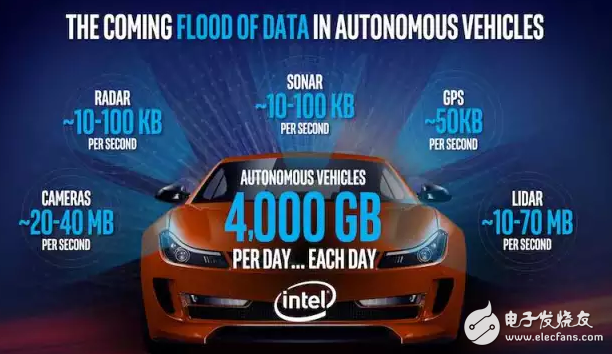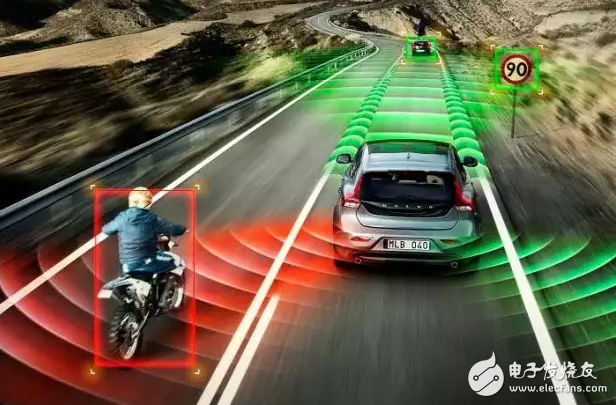Recently, there has been an invisible knife in the field of automatic driving.
But this time the protagonist is no longer a well-known car company or entrepreneurial project, but Intel and NVIDIA in the chip industry.
First, Intel made a big acquisition of Mobileye, leaving a horror; followed by NVI and Bosch jointly launched an Xavier chip-based autopilot platform, leaving no clouds.
Before continuing the discussion, an obvious question was why did this push of autonomous driving become a car accessories supplier?
Why is the accessory supplier?Just as Boeing does not produce all the parts of an aircraft, large car companies do not produce all the parts of the car.

Apple does not produce any parts but can dominate the entire mobile phone market. The practice of OEMs is similar. They don't go all out to produce various parts such as steering wheel, tires, seats, windows, gauges, navigation, etc., but give them to more efficient suppliers, and they focus on controlling the whole vehicle. The efficiency of the entire industry chain.
In fact, they can earn a lot of money with only the core powertrain (engine, transmission) technology. Dealers can also make a big profit by repairing the fuel engine, the oil filter and changing the oil.
If it is not the recent ups and downs of Tesla's step by step, they are really cold for electric cars and automatic driving. After all, throwing away the fuel engine is equivalent to overthrowing the full feast that they are enjoying, and feeding the wreckage and coldness - in exchange for you, you are not willing to break into it.
And accessory suppliers will not have such worries, their tires, seats, windows, air conditioners, stereos and other equipment can still make money. This is about the technology of autopilot-related sensors, navigation, auto-cruise, etc. The accumulation of real-world technology is largely due to the related parts suppliers. For example, Mobileye's automatic assisted driving, Bosch's navigation system, and more.
Autopilot on the road means that these parts suppliers will have the most core and influential technology on the new car. And a fuel engine with hundreds of parts is almost impossible to get on the autonomous car because it can't be controlled by the chip and the maintenance is too complicated. In other words, under the catalysis of autonomous driving, the automobile industry currently dominated by fuel engines will have to be reshuffled, and the suppliers who are diligently supporting the entire industrial chain will definitely feel the change of wind direction first.
The car controlled by artificial intelligence must be embedded in the components that can be programmed to be reliably controlled, especially the motor and battery. Although the current key is all kinds of sensors, navigation chips, and on-board computers that are closely related to autonomous driving, with the upgrade of the entire automobile industry chain, the chipping degree of other components will only become higher and higher, and the most perfect is to achieve The level of the "pillar brother" on the electronic star.
As a result, the chip industry's lost boss, Intel, even if it missed the entire smartphone era, or even the current machine learning hardware, still has the opportunity to return to the peak. The premise is that it can enter the autonomous driving industry, and can stand firm, and the big-handed purchase of a ready-made accessory supplier will naturally be immediate: just as Qualcomm spent $47 billion to win NXP, Intel bought $1 billion for Mobileye.
But the huge amount of money here still can't guarantee the future promised by autonomous driving, but it is to ensure the official entry of these two chip giants.
What can the technology chain tell us?In the words of Mobileye CTO, autonomous vehicles require all players in the entire technology chain to work together, and only autopilot systems require sensor-sensing technology, high-precision map positioning, and artificial intelligence auto-driving strategies.
sensor
The specific sensing technology is the Camera, ultrasonic sensor, millimeter wave radar, laser radar... all the sensors used to help the vehicle understand its surroundings. Next, let's talk about it one by one.
The camera is the easiest to understand. It is well known that the Tesla Autopilot generation hardware using Mobileye technology has only one front-view camera. In the controversial Florida car accident, Autopilot's intrinsic blind spot on the side perception almost ruined the autonomous driving technology that started.
Fortunately, the improvement of Autopilot's second-generation hardware is large enough, only the front-view camera is increased to three, which are used for far and near viewing angles, up to 250 meters. In addition, there is a pair of front and rear sides, and a rear side. The rear view camera achieves 360 degrees without dead angle coverage; the perceived visual information will be rendered into 3D images of real-time traffic conditions for determining driving strategies.
Ultrasonic sensors can be used to supplement visual information. For example, Autopilot II used 12 ultrasonic sensors to monitor soft and hard objects around the vehicle to better distinguish pedestrians and vehicles.

Millimeter wave radar is the strength of traditional parts suppliers. However, Autopilot II is only equipped with a long-range radar to sense the road ahead, while the new Audi A4 uses a long-range radar + 4 short-range radars to achieve full-featured automatic assisted driving.
Lidar is the core of traditional unmanned technology. Its 3D modeling and synchronous drawing capabilities were originally used by the military for high-precision missiles. The laser radar used in Google's unmanned vehicles is Velodyne's HDL-64E, which is priced at about $80,000, which is equivalent to a Tesla Model S.
With solid-state laser radar with phased array technology, Quanergy says its S3 product can be sold for as little as $250, but its mass production will require a process.
Positioning TechnologyThe hardware of high-precision positioning technology requires GPS combined with inertial sensors to provide additional information such as acceleration, attitude and direction of the vehicle in addition to the specific position and speed. This requires a dedicated positioning technology supplier.
Positioning related software technology involves map data. Mobileye's REM (Road Experience Management) uses the camera to capture the logo on the road surface for auxiliary positioning, so as to obtain more new map information and continuously update the map database of the cloud.
At present, because any sensor has its obvious limitations, any autopilot sensing and positioning function cannot be done independently by a sensor or a certain technology. Thus, the computing platform used to process all of these driving data is extra important.
Autopilot strategyAs mentioned earlier, the second generation of Autopilot re-rendered all the information collected by the sensor into a real-time 3D model. The computing platform used here is NVIDIA's GPU, which is the inherent advantage of GPU architecture in deep learning. To know the latest generation of GPU cores, NVIDIA is not even used on general graphics cards, but is preferred for artificial intelligence.
Mobileye's EyeQ3 platform is self-developed based on its ASIC architecture. However, the development of high-performance chips can be made without opening a high-profile conference. This should be an important reason why Mobileye last year turned to Intel this year after it announced a joint venture with STMicroelectronics to develop the next generation of EyeQ5 chips. After all, the technology of the chip giant can not be blown by bragging.
Another FPGA-based computing platform is the solution used by Audi unmanned vehicles, specifically Altera's Cyclone V. However, Altera, the FPGA industry leader, was included in Intel's $16.7 billion in 2015.
Only the technology chain of the autopilot system itself has been extremely complicated, and this has not yet mentioned the various control systems of the vehicle itself. The complexity here just confirms the words that Wu Enda said when he left Baidu:
"...I hope that artificial intelligence can free humans from repetitive mental work, such as busy traffic driving. This work is not done by any company independently. This is the world's artificial intelligence researchers and engineers. Common issues."
visual presenter,camera scanner,document scanner,book scanner
Guangdong ZhiPing Touch Technology Co., Ltd. , https://www.zhipingtouch.com